Media
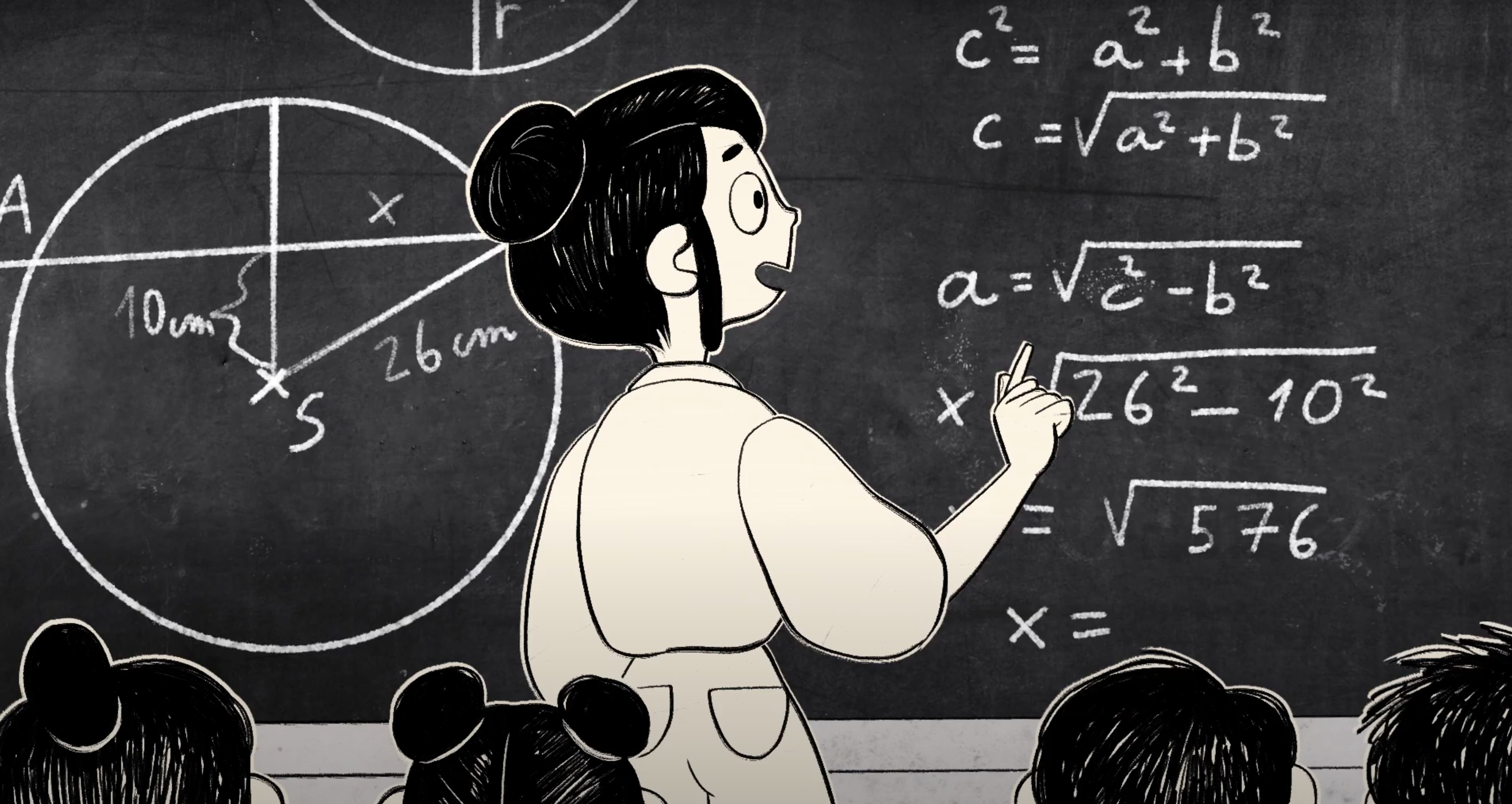
COVID-19 continues to disrupt learning for over 325 million children in East Asia and the Pacific.
As variants of the disease take hold in many countries, governments must heed the lessons learned from previous and ongoing COVID-19 responses.
While there will be difficult challenges ahead, this moment should also act as a trigger to reimagine the way children learn, no matter who or where they are.
It is a time for governments to shine.
We should not go back to what was. Even before school closures, far too many children were being left behind.
That is why this is the time to protect and reimagine education systems.

Closures lead to massive learning & economic losses
In 2020, many countries closed schools in response to COVID-19, despite evidence indicating that schools are not a significant driver of the pandemic.
During this time, alternative learning measures were in place through the internet, television, radio, and print. Yet, remote learning was out of reach for at least 80 million children, serving to amplify existing inequalities further.
These were children who do not have internet access, personal computers, TVs or even radio at home.
These are the children already being left behind in many places: the most impoverished, those with disabilities, those affected by migration, and those from minority ethnic and linguistic groups.
With every day that goes by under new closures, more and more children will fall further behind.
We cannot let this happen again.

Seeds of opportunity

UNICEF is working with partners across the region to respond to the COVID-19 emergency, and part of the response entails ensuring every child continues to learn.
We cannot let today’s crisis become a crisis for generations to come, which is why we are asking governments to continue investments in education and use this crisis as an opportunity to reimagine and rethink how children from all walks of life can learn.
There is no better investment than education and governments must act today to safeguard the future of the next generation.
Unless mitigation measures are implemented, the World Bank estimates a loss of $10 trillion in earnings over time for this entire generation of students.
For the Asian Development Bank (ADB), the value of these losses is estimated at $1.25 trillion for developing Asia, equivalent to 5.4 per cent of the region’s 2020 gross domestic product (GDP). Existing evidence shows the cost of addressing learning gaps are lower and more effective when they are tackled earlier, and that investments in education support economic recovery, growth and prosperity.
To compound the issue further, children and their parents and teachers have faced increased levels of anxiety and stress due to isolation, uncertainty, and fear of the future.
But there is a way to recover and rebound from this crisis.
While we are in a difficult period, putting more people into hardship and laying bear the difficult situation of millions of children already in poverty in the region, it is also creating new ideas and opportunities to close the educational divide.
Seeds of opportunity are beginning to sprout.
What we are seeing across East Asia & Pacific is that when faced with crisis, individuals and governments have the ability to rebound and reimagine how education can work for children.
A time to recover lost learning.
A time to rethink teaching & learning.
A time to reimagine education.
For every child.
Actions to take
Reopen schools as soon as safe to do so
Reopening schools cannot wait for all teachers and students to be vaccinated. With the global vaccine shortages plaguing low and middle-income countries, vaccinating frontline workers and those most at risk of severe illness and death will remain a priority.
Protect education budgets
While national budgets tighten, it is important to protect education from budget cuts. This will safeguard the investments and huge progress already achieved in recent decades – and protect children’s futures.
Alternative learning solutions
Not every child can get online, and not every school can be open safely, therefore innovative learning solutions should be created with local communities and parents.
Boost investment in teachers
Give teachers the skills and knowledge to better adapt to the new normal, with digital skills and managing home learning.
Catch-up programmes
Create programmes to help children catch-up from lost learning and consider adjusting the academic calendar to make up for lost time
Prioritize wellbeing
Education, safety, friends, and food have been replaced in some cases by anxiety, violence, and teenage pregnancy. Education needs to focus on health, nutrition, mental health and protection services.
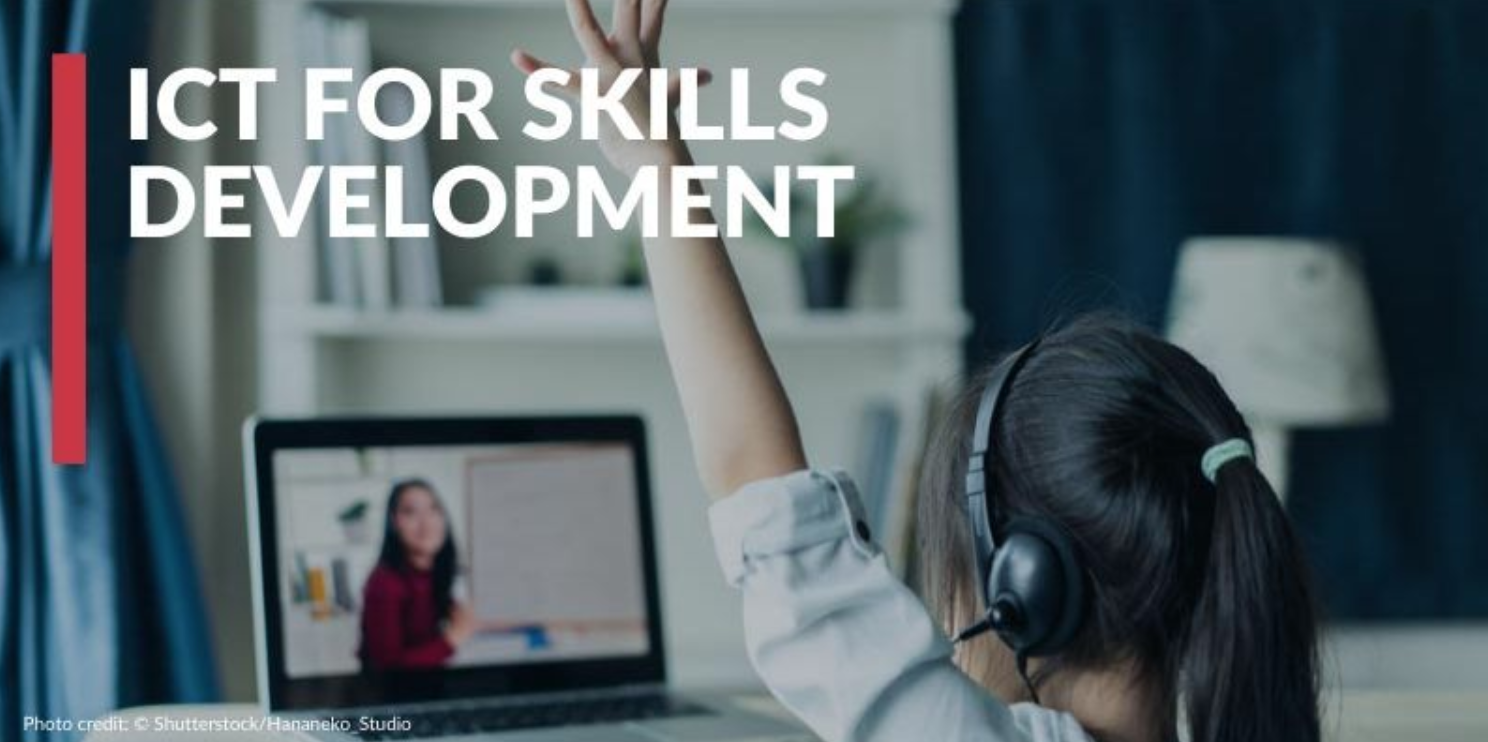
Author: UNESCO
Audience: Government officials, development partners, ICT experts from Central Asia and beyond, other education stakeholders or interested participants
Languages: English and Russian
Geographical Scope: Central Asia
This year’s CASIE (2020) is organized virtually in light of COVID-19, with the theme “ICT-enabled Skills Development in Rural and Remote Areas Impacted by COVID-19 in Central Asia and Beyond”. This is a particularly pertinent issue in Central Asia, as more than half of the region’s population (57.5%) resides in rural areas, according to the World Bank. The pandemic has dramatically affected the continuity of education, delivery, quality and skills development, and more so for learners and teachers in rural and remote areas.
- Webinar 1 (25 September 2020): ICT-enabled distance education opportunities for students and teachers in the context of COVID-19 (Eng),(Rus)
Presentations:
1. Overview of Central Asian countries’ experiences and responses to COVID-19, particularly in supporting teachers and students in rural/remote areas
Republic of Kazakhstan (Eng), (Rus)
Kyrgyz Republic (Eng), (Rus)
Republic of Tajikistan (Eng), (Rus)
Republic of Uzbekistan (Eng), (Rus)
2. Inter-government partnership to support national ICT in Education development in Central Asia (Mr Jaewon Cho, Programme Officer, KERIS) (Eng), (Rus)
3. Systematic teacher support & public-private partnerships for underprivileged students in Republic of Korea (Dr Sanghyun Jang, Director, Higher Education, Academic Research, International Cooperation Department, KERIS to present on behalf of the Korean Ministry of Education) (Eng), (Rus)
- Webinar 2 (7 October 2020): Open and distance education to promote learning and skills development throughout life (Eng), (Rus)
Presentations:
1. Addressing digital competence challenges through DigComp and related European digital competence frameworks and tools (Mr Alessandro Brolpito, Senior Specialist in Digital Skills and Learning, European Training Foundation) (Eng), (Rus)
2. Digital education to enable young potential in Kazakhstan (Ms Ji-Hyun Yoon, Samsung Electronics) (Eng), (Rus)
3. Skills development programme for rural populations in Kyrgyzstan, Tajikistan and Uzbekistan (Ms Dr. Thekla Kelbert, DVV International Regional Director for Central Asia) (Eng), (Rus)
- Webinar 3 (23 October 2020): Relevant educational content and OER for skills development.
Coming soon
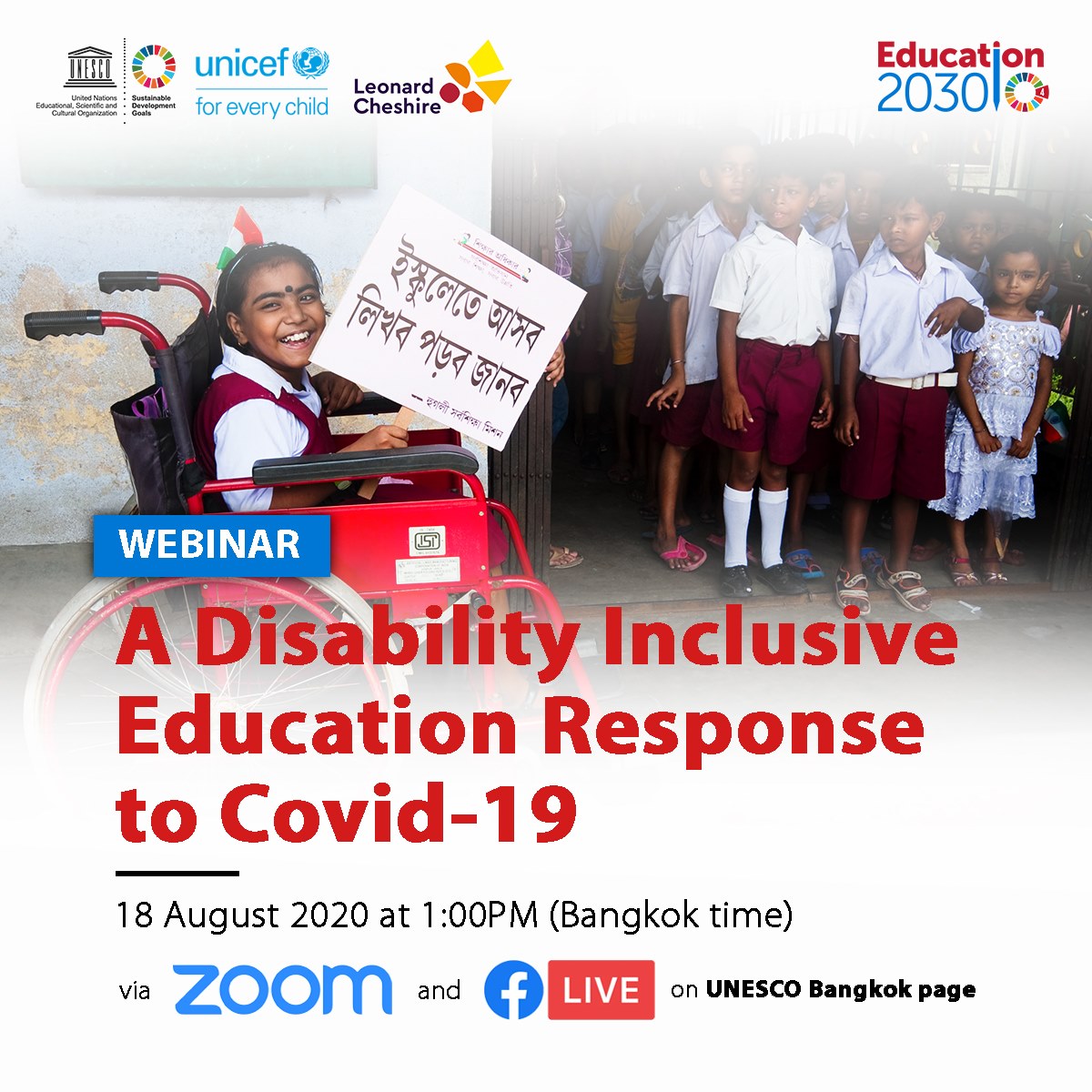
Author: UNESCO, UNICEF and Leonard Cheshire
Audience: Policymakers, Civil Society Organizations and Donors
Languages: English
Geographical Scope: Regional
This webinar aims to bring regional and national level education stakeholders including UNESCO, UNICEF, Civil Society Organisations, Organisations of Persons with Disabilities (OPDs), donor agencies together to understand how Covid-19 has impacted on the education of children with disabilities and discuss actions to ensure children with disabilities are able to return to school.
Resources
Webinar ppt - Leonard Cheshire
Webinar Questions and Responses – Teachers and teaching modalities
Webinar Questions and Responses – Monitoring, evaluations and data collection
Webinar Questions and Responses – Community Engagement
Other resources
Ensuring an inclusive return to school for children with disabilities

Author: UNESCO
Audience: Caregivers and Parents
Languages: English, Lao, Thai and Myanmar
Geographical Scope: Regional
Video: Staying safe and healthy when returning to school
This brief animated video reassures parents about their children returning to school as lockdowns end and how to prepare for the reopening of schools. Key messages are to continue to practice physical distancing and good hygiene and to keep informed about notices disseminated by education and health authorities.
ວິດີໂອ: ຮັກສາຄວາມປອດໄພ ແລະ ຮັກສາສຸຂະພາບເມື່ອກັບເຂົ້າໂຮງຮຽນ
ວີດີໂອພາບເຄື່ອນໄຫວສັ້ນໆນີ້ ເຮັດໃຫ້ພໍ່ແມ່ຜູ້ປົກຄອງໝັ້ນໃຈ ກ່ຽວກັບການກັບຄືນເຂົ້າໂຮງຮຽນຂອງລູກພວກເຂົາ ເມື່ອມາດຕະການໃຫ້ຢູ່ເຮືອນໄດ້ສິ້ນສຸດລົງ ແລະ ວິທີການກະກຽມ ສຳລັບການເປີດໂຮງຮຽນຄືນໃໝ່. ຂໍ້ຄວາມສຳຄັນນີ້ ແມ່ນເພື່ອສືບຕໍ່ປະຕິບັດການເວັ້ນໄລຍະຫ່າງດ້ານຮ່າງກາຍ, ມີສຸຂະອະນາໄມທີ່ດີ ແລະ ເພື່ອໃຫ້ຂໍ້ມູນແຈ້ງການຕ່າງໆທີ່ໄດ້ເຜີຍແຜ່ໂດຍຄະນະຮັບຜິດຊອບວຽກງານສະກັດກັ້ນ, ກັນການລະບາດ, ຄວບຄຸມ ແລະ ກຽມຄວາມພ້ອມຮອບດ້ານ ເພື່ອຕ້ານພະຍາດໂຄວິດ-19 ຂອງກະຊວງສຶກສາທິການ ແລະ ກິລາ ແລະ ກະຊວງສາທາລະນະສຸກ.
รักษาความปลอดภัยและมีสุขภาพที่ดีเมื่อกลับไปโรงเรียน
วิดีโอสั้นเรื่องนี้จัดทำขึ้นเพื่อช่วยสร้างความมั่นใจให้กับผู้ปกครองในการกลับไปโรงเรียนของบุตรหลานหลังจากการกักตัวได้จบลง และเสนอแนะวิธีเตรียมความพร้อมสำหรับการเปิดโรงเรียนอีกครั้ง ประเด็นสำคัญได้แก่ การรักษาระยะห่างทางสังคมและความสะอาดอย่างต่อเนื่อง พร้อมด้วยการติดตามข่าวสารที่เผยแพร่โดยหน่วยงานด้านการศึกษา และสาธารณสุข
ဗြီဒီယို၊ ေက်ာင္းၿပန္ တက္ခ်ိန္တြင္ အႏၠရာယ္ ကင္းကင္း ႏွင့္ က်န္းက်န္းမာမာ ေနထိိုင္ပါ။
ဤကာတြန္းရုပ္ရွင္ အတိုသည္ သြားလာကန္႕သတ္မႈမ်ား ေၿဖေလ်ာ႔ၿပီးေနာက္ ကေလးမ်ား ေက်ာင္းၿပန္တက္ခ်ိန္တြင္မိဘမ်ား၏ စိုးရိမ္ေသာကကို ေၿပေပ်ာက္ေစရန္ႏွင့္ ေက်ာင္းၿပန္ဖြင္႔ၿခင္းအတြက္ မည္သို႕ ၿပင္ဆင္ရမည္ကို သိရွိရန္ၿဖစ္သည္။ အဓိက မွာၾကားခ်က္ အေၾကာင္းအရာမ်ားမွာ လူခ်င္း ထိေတြ႕မႈ မရွိဘဲ ခပ္ခြာခြာေနရန္၊ တကိုယ္ေရ သန္႕ရွင္းမႈ အတြက္ လိုက္နာ ေဆာင္ရြက္ရန္ ႏွင့္ ပညာေရး နွင့္ က်န္းမာေရး အာဏာပုိင္မ်ား ၿဖန္႕ေဝေသာ သတိၿပဳရမည့္ အခ်က္မ်ားကို သိရွိရန္ ၿဖစ္သည္။

64 cards summarize key expert recommendations on several topics related to learning at home, working remotely, staying healthy, talking about COVID-19 and information hygiene, relationships, and leisure time during home confinement.
The cards provide:
- Useful tips for parents, caregivers and teachers how to talk to children of different age about COVID-19 and be prepared to answer difficult questions
- Rules to stay motivated to study or work remotely, organize daily routine and balance work, study and the rest
- Universal precautious measures to stay safe and protect others including those who cannot work remotely
- Ideas how to maintain physical and mental health, read news about the coronavirus and cope with stress
- Advice how to support healthy relationships and communication without discriminating those affected by COVID-19
English Version
1. What question children could ask about the virus?
2. How to talk to your children about the coronavirus?
3. Talking about the virus with children of ages: Helpful tips
4. Seven rules to stay motivated to study or work during quarantine
5. How to study at home and prepare for exams during quarantine?
6. What if going into quarantine is not an option yet?
7. How to read news about the coronavirus?
8. How to cope with stress in a pandemic?
9. Chasing the virus, not the people: How to deal with stereotypes around the coronavirus?
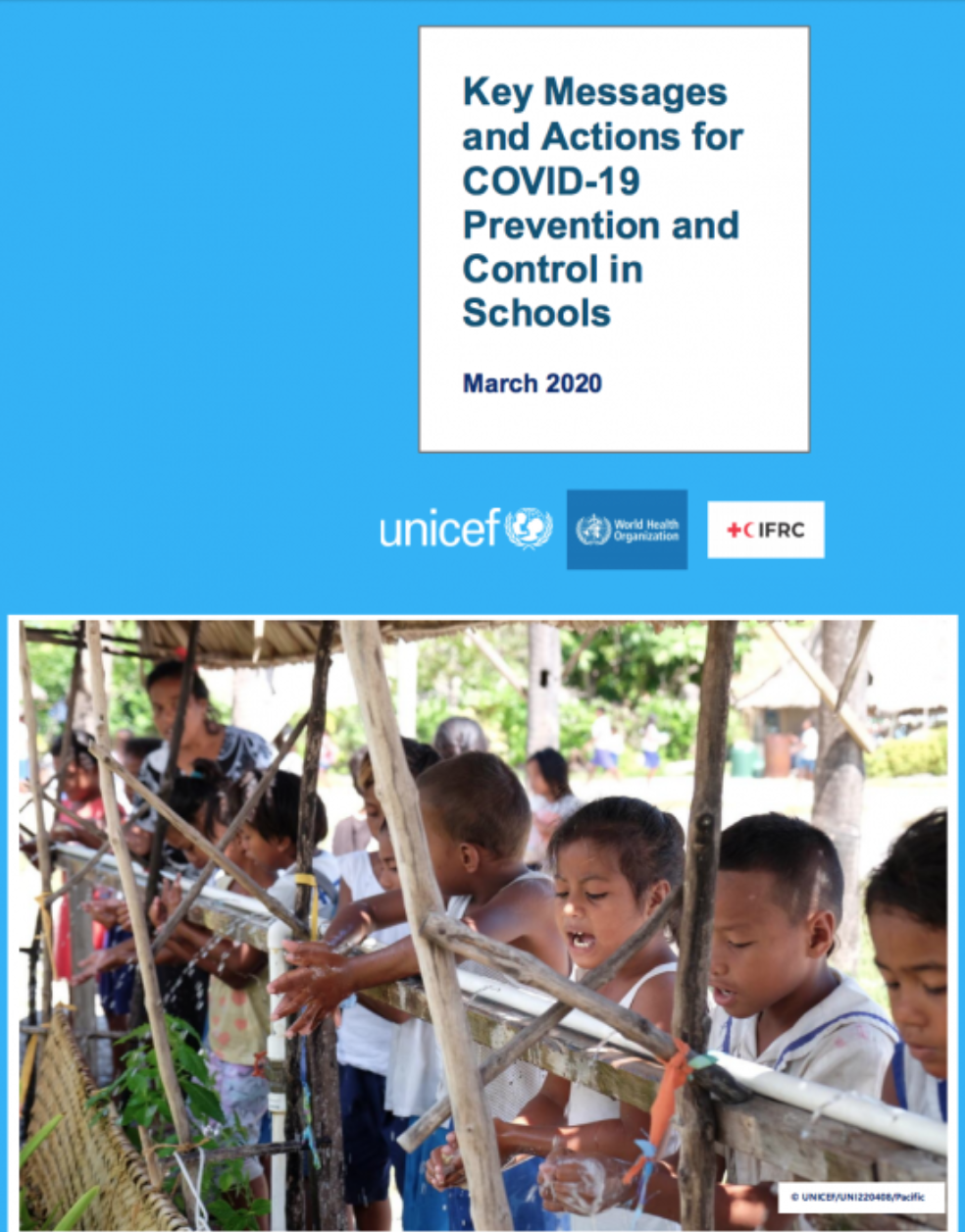
Author
UNICEF, WHO and IFRC
Type
Guidelines/Manuals
Published Date
2020-03-12
Description
As of March 2020, the outbreak of coronavirus disease (COVID-19) has been declared a Public Health Emergency of International Concern, and the virus has spread to many countries and territories. While COVID-19 continues to spread, it is important that communities take action to prevent further transmission, reduce the impacts of the outbreak and support control measures.
The protection of children and educational facilities is particularly important. Precautions are necessary to prevent the potential spread of COVID-19 in school settings. However, care must also be taken to avoid stigmatizing students and staff who may have been exposed to the virus. COVID-19 does not differentiate among borders, ethnicities, disability status, age or gender. Education settings should continue to be welcoming, respectful, inclusive and supportive environments to all. Measures taken by schools can prevent the entry and spread of COVID-19 by students and staff who may have been exposed to the virus, while minimizing disruption and protecting students and staff from discrimination.
The purpose of this document is to provide clear and actionable guidance for safe operations through the prevention, early detection and control of COVID-19 in schools and other educational facilities. The guidance, while specific to countries that have already confirmed the transmission of COVID-19, is relevant in all other contexts. Education can encourage students to become advocates for disease prevention and control at home, in school and in their community by talking to others about how to prevent the spread of viruses. Maintaining safe school operations or reopening schools after a closure requires many considerations but, if done well, can promote public health.
For more on UNICEF's response to COVID-19, visit: https://www.unicef.org/coronavirus
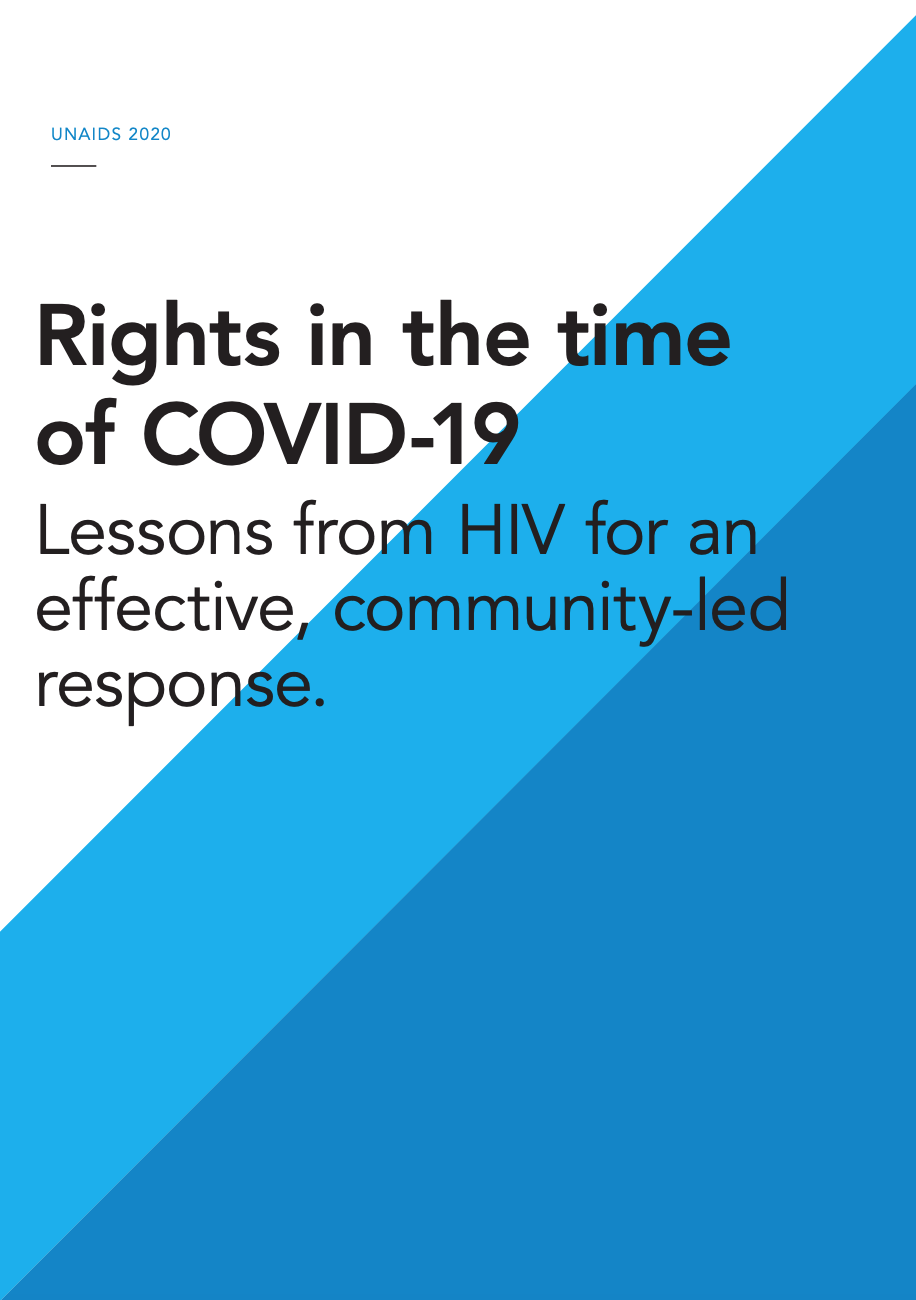
Right now, we are facing an unpredictable and highly dynamic situation as a global community. However, as we have seen from the solidarity, support and power of communities in the HIV epidemic and already in communities responding to the COVID-19 pandemic, the response must not be fear and stigma. We need to build a culture of solidarity, trust and kindness. Our response to COVID-19 must be grounded in the realities of people’s lives and focused on eliminating the barriers people face in being able to protect themselves and their communities. Empowerment and guidance, rather than restrictions, can ensure that people can act without fear of losing their livelihood, sufficient food being on the table and the respect of their community. Ultimately it will give us a more effective, humane and sustainable response to the epidemic. This document is also available in Arabic.
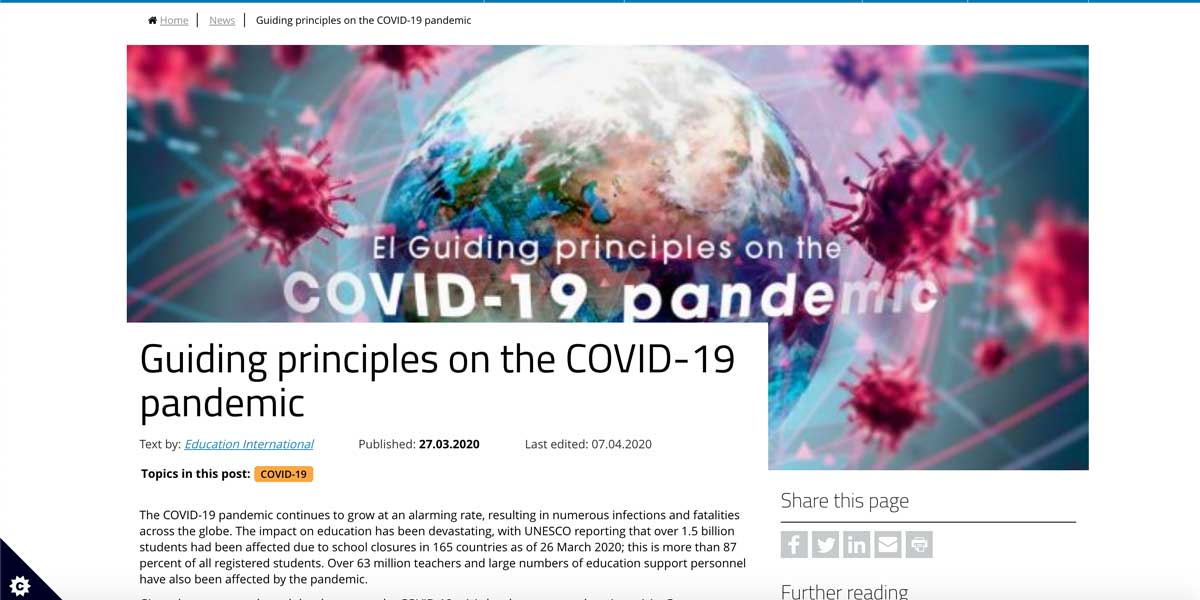
The COVID-19 pandemic continues to grow at an alarming rate, resulting in numerous infections and fatalities across the globe. The impact on education has been devastating, with UNESCO reporting that over 1.5 billion students had been affected due to school closures in 165 countries as of 26 March 2020; this is more than 87 percent of all registered students. Over 63 million teachers and large numbers of education support personnel have also been affected by the pandemic.
Given these unprecedented developments, the COVID-19 crisis has become an education crisis. Governments around the world need to develop swift, coherent and proportionate responses to the pandemic to bring it under control and minimise its impact on the health and livelihood of societies, as well as on children, young people and adults’ right to quality education. An appropriate response to COVID -19 in the education sector should take into account the rights and best interests of students, teachers and education support personnel and involve education unions in developing the containment and recovery measures.
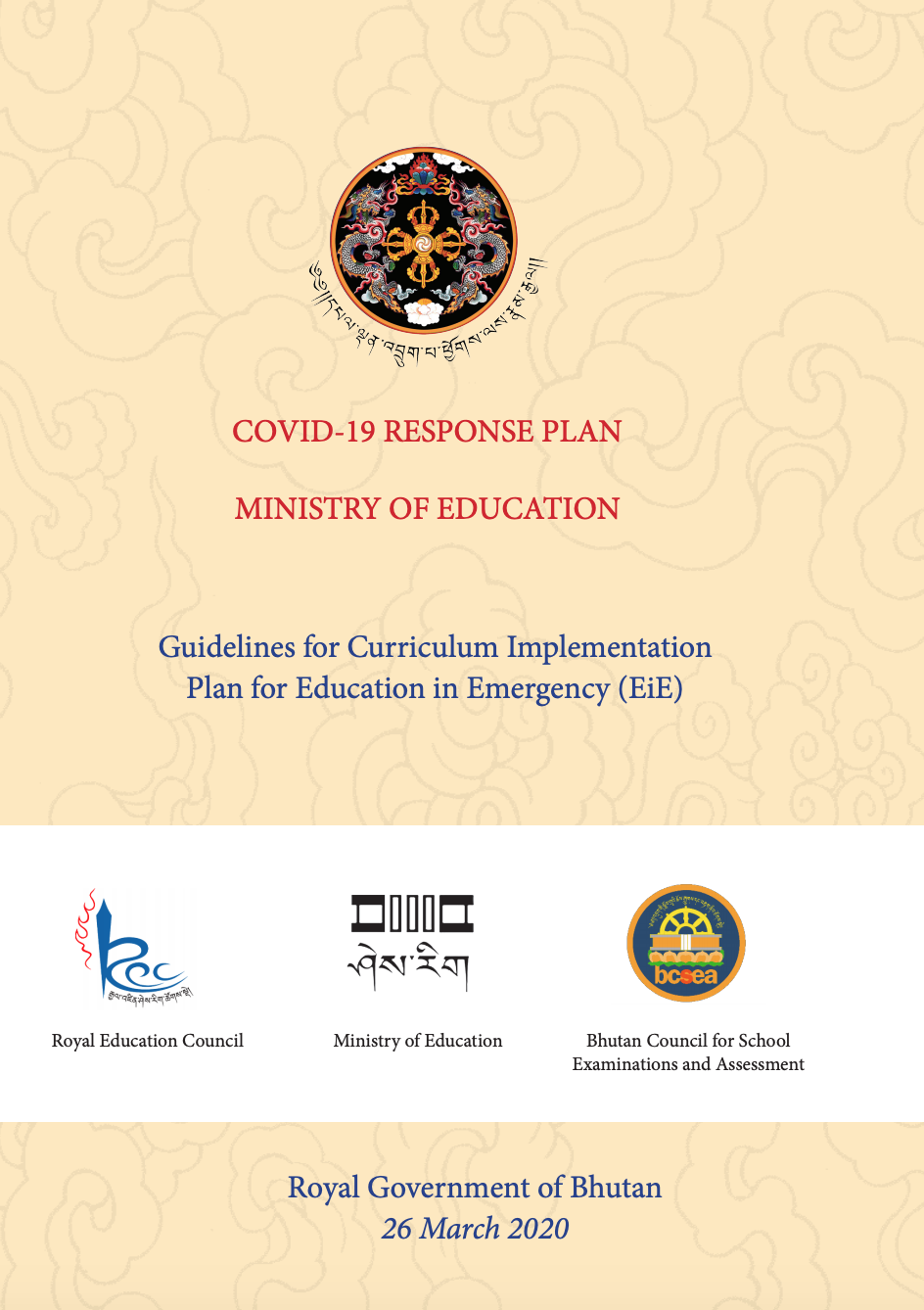
Author: Royal Government of Bhutan, Ministry of Education
Audience: Policymakers and Teachers
Language: English
Geographical Scope: Bhutan
Forwarding letter for Guidelines for Curriculum Implementation Plan for EiE (Education in Emergency)
Guidelines for Curriculum Implementation Plan for Education in Emergency (EiE)
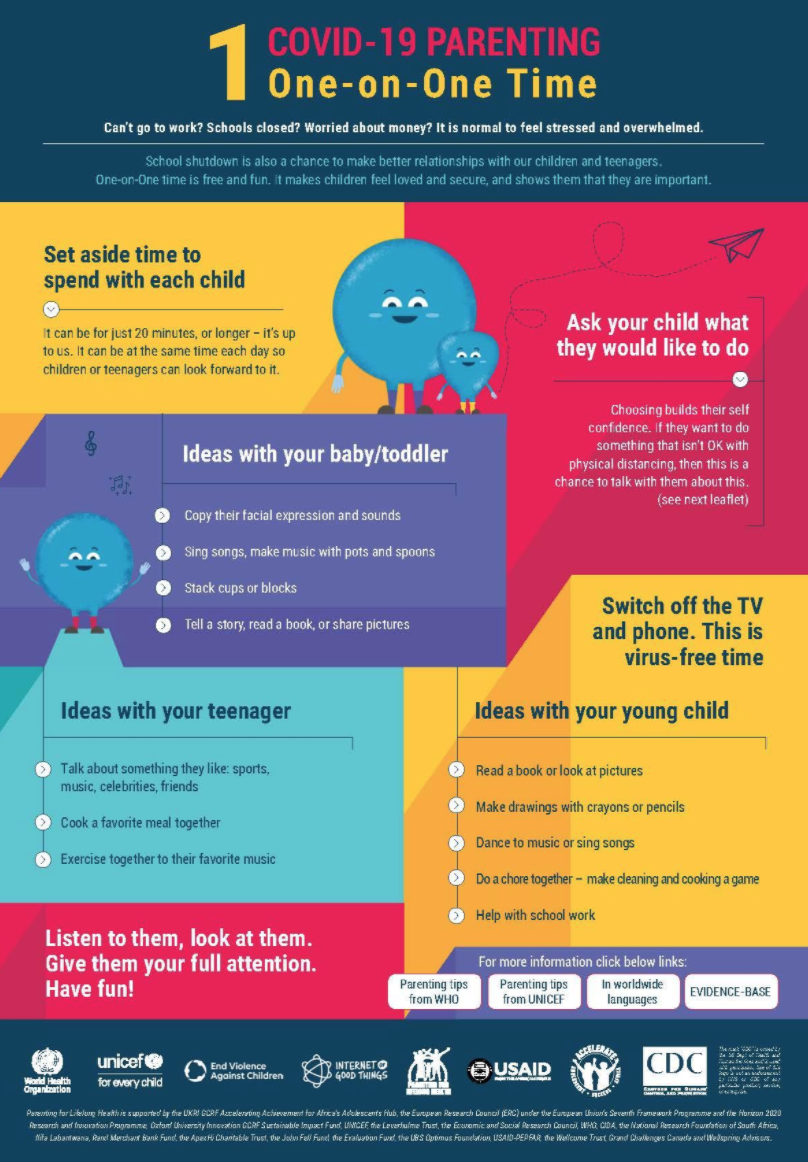
To help parents interact constructively with their children during this time of confinement, these six one-page tips for parents cover planning one-on-one time, staying positive, creating a daily routine, avoiding bad behaviour, managing stress, and talking about COVID-19. Use them to your and your kids’ advantage, and have fun in doing so.
For more healthy parenting tips


